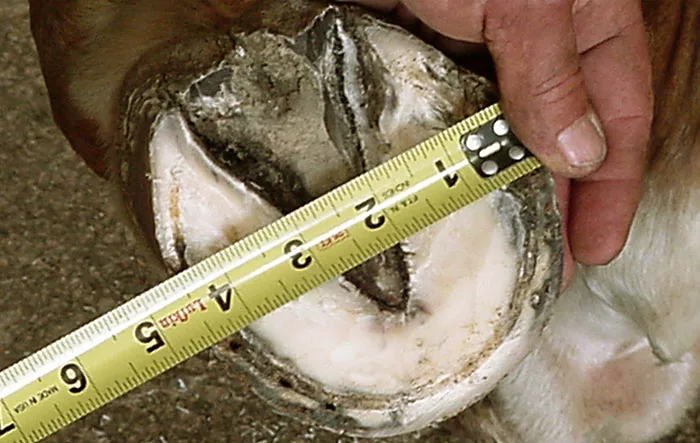American Farriers Journal
American Farriers Journal is the “hands-on” magazine for professional farriers, equine veterinarians and horse care product and service buyers.

FIGURE 1. This hoof is much wider on the medial half than the lateral half. Note the distance from the medial wall to the center of the frog is exactly 2 1/2 inches, but the lateral half is just over 2 inches wide. In balance, this hoof would measure 5 inches across.
There are many factors to consider when attempting to achieve proper balance in a horse. Hoof/pastern axis, dorsopalmar balance, medial-lateral balance and equal symmetry of hooves and limbs all play a significant role.
The majority of breakdown and lameness concerns in the performance horse with musculoskeletal disorders can be directly traced to hoof imbalance. This is due to the abnormal and unequal forces transmitted up the horse’s limbs, placing undue stress and concussion on joints, tendons and other supportive structures.
This case involves a cutting horse from Tiffany Hill South, Wappingers Falls, N.Y., home of the Northeast Cutting Horse Association, with a medial-lateral imbalance of the hoof’s weight-bearing surface.
As we know, the lower limb joints are ginglymus, allowing extension and flexion of the limb but restricting medial or lateral rotation of the joints. For this reason, the unequal weight bearing caused by medial-lateral imbalance can’t be compensated for by the lower limb.

FIGURE 2. When holding the horse’s leg behind and below the knee with the leg hanging freely, we can clearly see the unequal weight-bearing surface of the hoof. While there is quite a bit of hoof showing medially, there is very little…